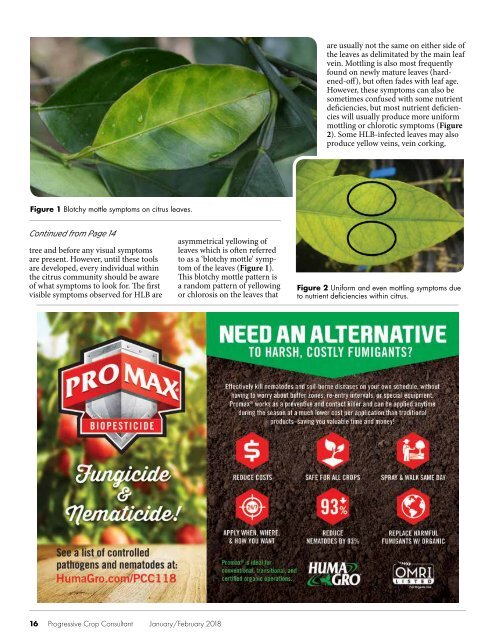Create successful ePaper yourself
Turn your PDF publications into a flip-book with our unique Google optimized e-Paper software.
are usually not the same on either side of<br />
the leaves as delimitated by the main leaf<br />
vein. Mottling is also most frequently<br />
found on newly mature leaves (hardened-off),<br />
but often fades with leaf age.<br />
However, these symptoms can also be<br />
sometimes confused with some nutrient<br />
deficiencies, but most nutrient deficiencies<br />
will usually produce more uniform<br />
mottling or chlorotic symptoms (Figure<br />
2). Some HLB-infected leaves may also<br />
produce yellow veins, vein corking,<br />
Figure 1 Blotchy mottle symptoms on citrus leaves.<br />
Continued from Page 14<br />
tree and before any visual symptoms<br />
are present. However, until these tools<br />
are developed, every individual within<br />
the citrus community should be aware<br />
of what symptoms to look for. The first<br />
visible symptoms observed for HLB are<br />
asymmetrical yellowing of<br />
leaves which is often referred<br />
to as a ‘blotchy mottle’ symptom<br />
of the leaves (Figure 1).<br />
This blotchy mottle pattern is<br />
a random pattern of yellowing<br />
or chlorosis on the leaves that<br />
Figure 2 Uniform and even mottling symptoms due<br />
to nutrient deficiencies within citrus.<br />
16 Progressive Crop Consultant <strong>January</strong>/<strong>February</strong> <strong>2018</strong>


















